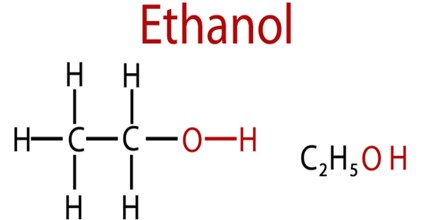
Viewpoint: EU looks elsewhere to boost ethanol supply

The T2 prompt physical assessment climbed to an average of €652/m³ last month — hitting €721.50/m³ on 19 November — as fuel suppliers looked to cover shortages in meeting renewable fuel blending targets for the year. Domestic blending mandates in the majority of EU member states will now rise in line with the EU Renewable Energy Directive (RED) 2020 target of a 10pc share of the road transport fuel pool.
The adoption of E10 — a gasoline blend that contains up to 10pc ethanol content — by more member states is encouraging demand. It is currently available in Belgium, Bulgaria, Estonia, Finland, France, Germany, Luxembourg and Romania. The Netherlands also rolled out E10 on 1 October. Slovakia, Hungary and Lithuania are due to make the grade available in 2020.
It is unpopular in Germany, the first EU country to introduce it, accounting for just 14pc of the country's 620,000 b/d gasoline market. But a further discount to E5 at service stations, if implemented, might encourage greater uptake and would offer a viable means for Germany to achieve its own greenhouse gas (GHG) savings target of 6pc, up by two percentage points on the year and in line with the EU Fuel Quality Directive (FQD).
On the supply side, the fourth quarter of the year is usually a period when extra volumes of ethanol produced from the European sugar beet harvest enter the market until February. At the same time demand declines, with most gasoline blending typically in the summer months.
While EU wheat and maize harvests in the 2019-20 season are forecast to be broadly similar to the five-year average — 1.6pc above and 0.6pc below, respectively — the sugar beet harvest is projected to be 5.1pc under the the five-year average as a result of frequent and abundant rainfall. Strong domestic sugar prices have also led producers to opt for table sugar. But with the removal in May of EU anti-dumping duties on US ethanol, which spanned the previous five years, suppliers are also looking to imported product to cover any shortfalls.
EU countries imported an average of 5,100 t/month of undenatured ethanol from the US in January-May 2019. Imports jumped to an average of 18,000 t/month in June-September. While many US ethanol producers are still unable to produce EU RED certified product, extra supply will weigh on prompt ethanol prices should more producers outside the EU market hit the minimum GHG savings requirement of 50-60pc.
US producers look likely to raise the GHG tag of their ethanol, given relatively low prices domestically. Firm values on European ethanol derivative contracts along the forward curve suggest it is economical for US product to head for Europe throughout the next 12 months. Imports from Peru should also support EU supply levels. The South American country is a consistent supplier of around 15,000 t/month of ethanol to Europe. Strong prices in Europe and a decline in prices in major consumer Brazil will likely encourage interest in transatlantic trade.
The potential impact of imports may be limited somewhat by growing EU demand for ethanol with higher credentials. There is appetite in several member states for product well above the required 50pc GHG savings baseline, particularly given challenges many countries face in meeting the FQD. The average GHG savings of ethanol produced in the EU was 71pc in 2018, according to ePure.
By Daniel Mackay


Trump weighs using $2 billion in CHIPS Act funding for critical minerals

Codelco cuts 2025 copper forecast after El Teniente mine collapse

Electra converts debt, launches $30M raise to jumpstart stalled cobalt refinery

Barrick’s Reko Diq in line for $410M ADB backing

Abcourt readies Sleeping Giant mill to pour first gold since 2014

Nevada army depot to serve as base for first US strategic minerals stockpile

SQM boosts lithium supply plans as prices flick higher

Viridis unveils 200Mt initial reserve for Brazil rare earth project

Tailings could meet much of US critical mineral demand – study

Kyrgyzstan kicks off underground gold mining at Kumtor

Kyrgyzstan kicks off underground gold mining at Kumtor

KoBold Metals granted lithium exploration rights in Congo

Freeport Indonesia to wrap up Gresik plant repairs by early September

Energy Fuels soars on Vulcan Elements partnership

Northern Dynasty sticks to proposal in battle to lift Pebble mine veto

Giustra-backed mining firm teams up with informal miners in Colombia

Critical Metals signs agreement to supply rare earth to US government-funded facility

China extends rare earth controls to imported material

Galan Lithium proceeds with $13M financing for Argentina project

Kyrgyzstan kicks off underground gold mining at Kumtor

Freeport Indonesia to wrap up Gresik plant repairs by early September

Energy Fuels soars on Vulcan Elements partnership

Northern Dynasty sticks to proposal in battle to lift Pebble mine veto

Giustra-backed mining firm teams up with informal miners in Colombia

Critical Metals signs agreement to supply rare earth to US government-funded facility

China extends rare earth controls to imported material

Galan Lithium proceeds with $13M financing for Argentina project

Silver price touches $39 as market weighs rate cut outlook

















